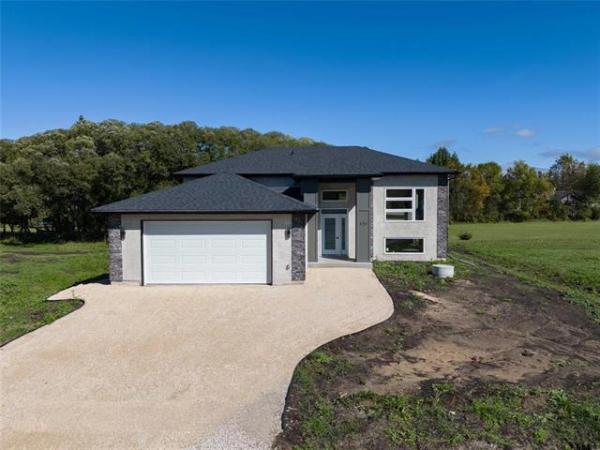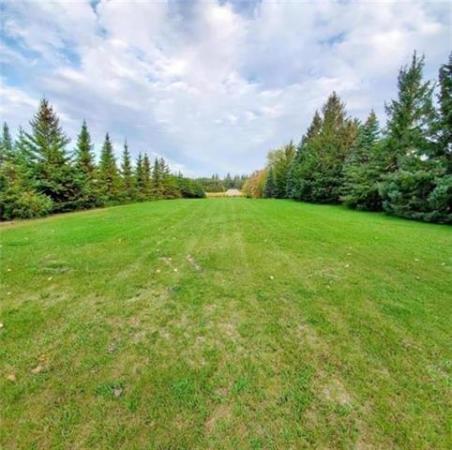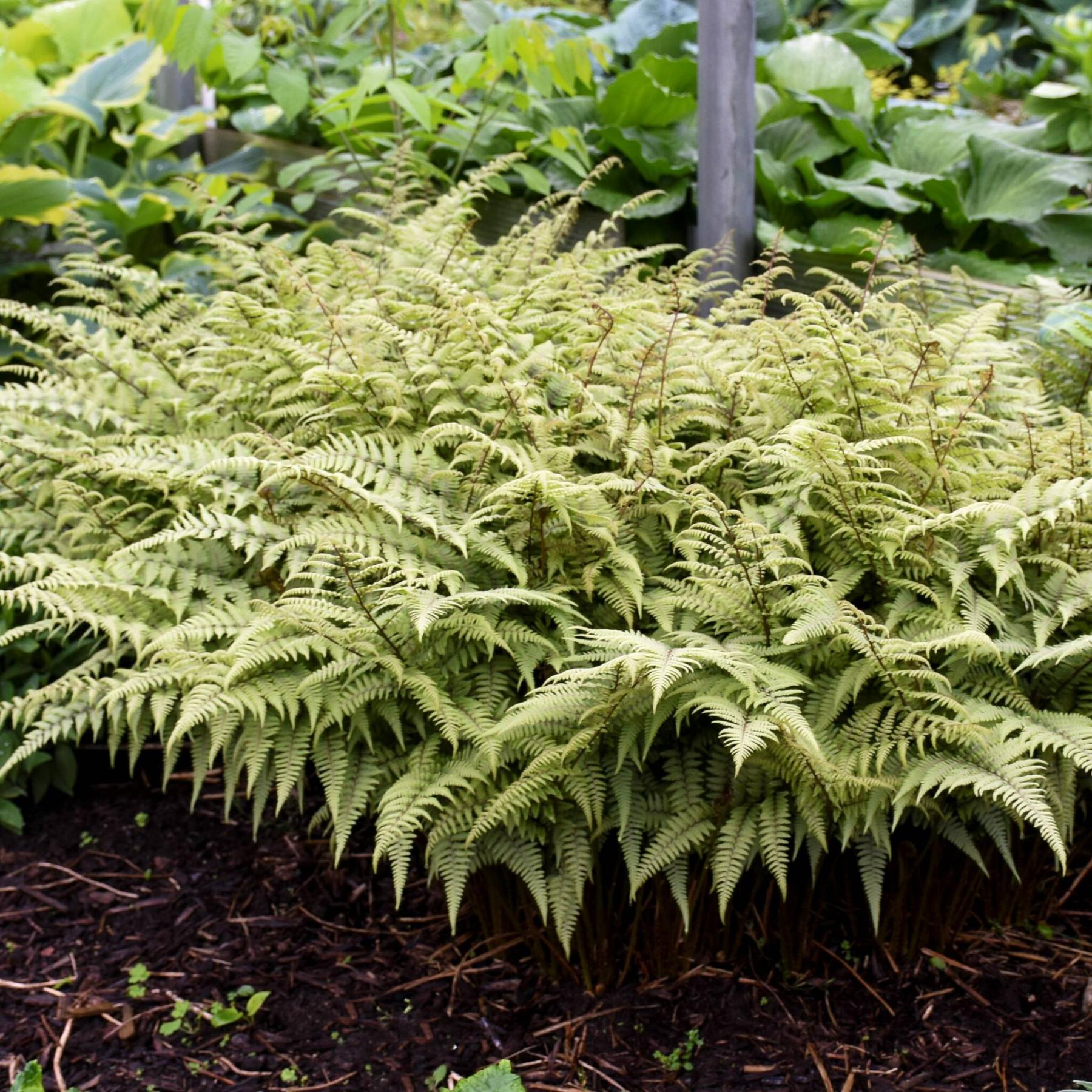
Walters Gardens Inc.
Ghost Fern has frosted apple green fronds with a silvery sheen for an ethereal mystique in your shade garden.
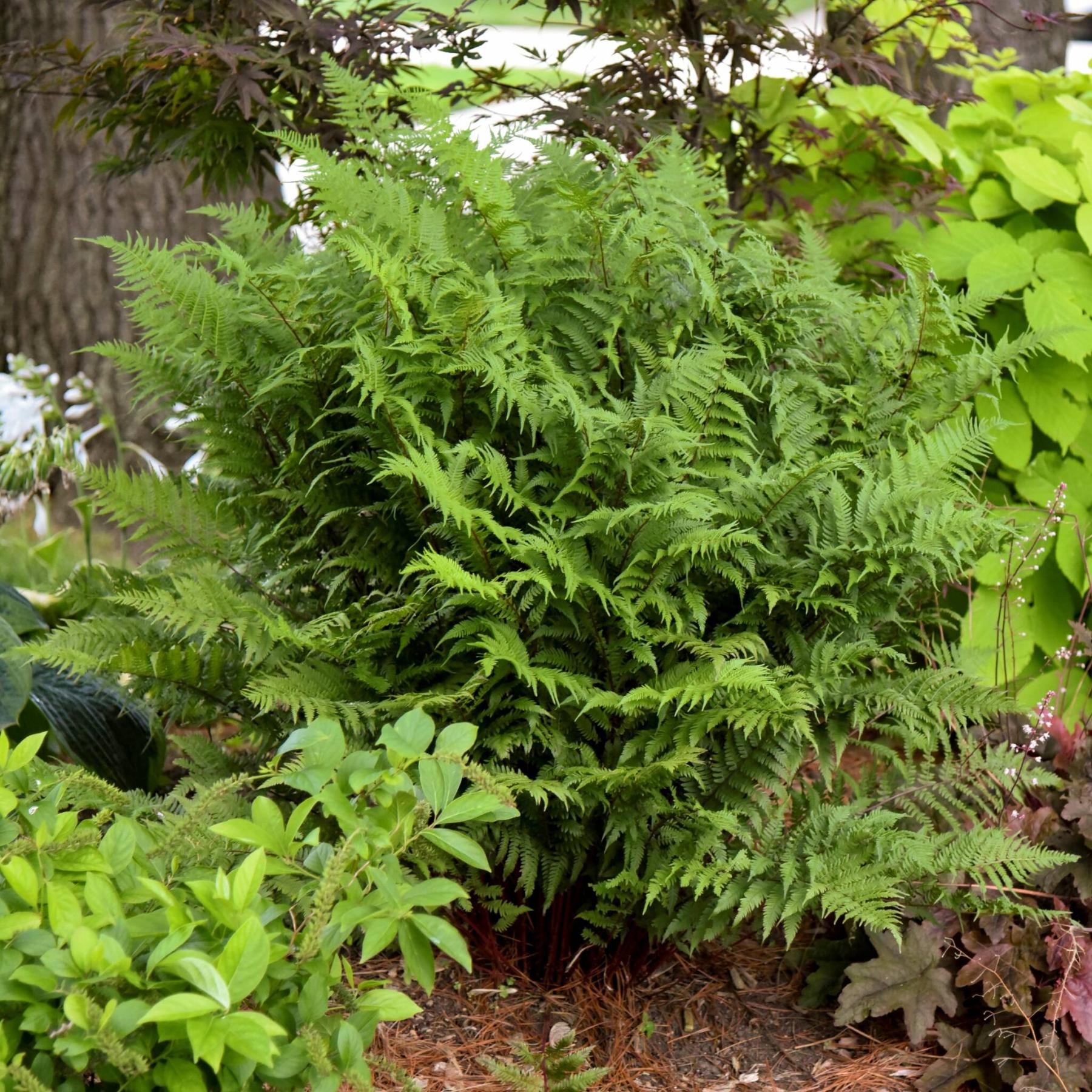
Walters Gardens Inc.
Lady in Red is a classic Lady Fern with burgundy stems.
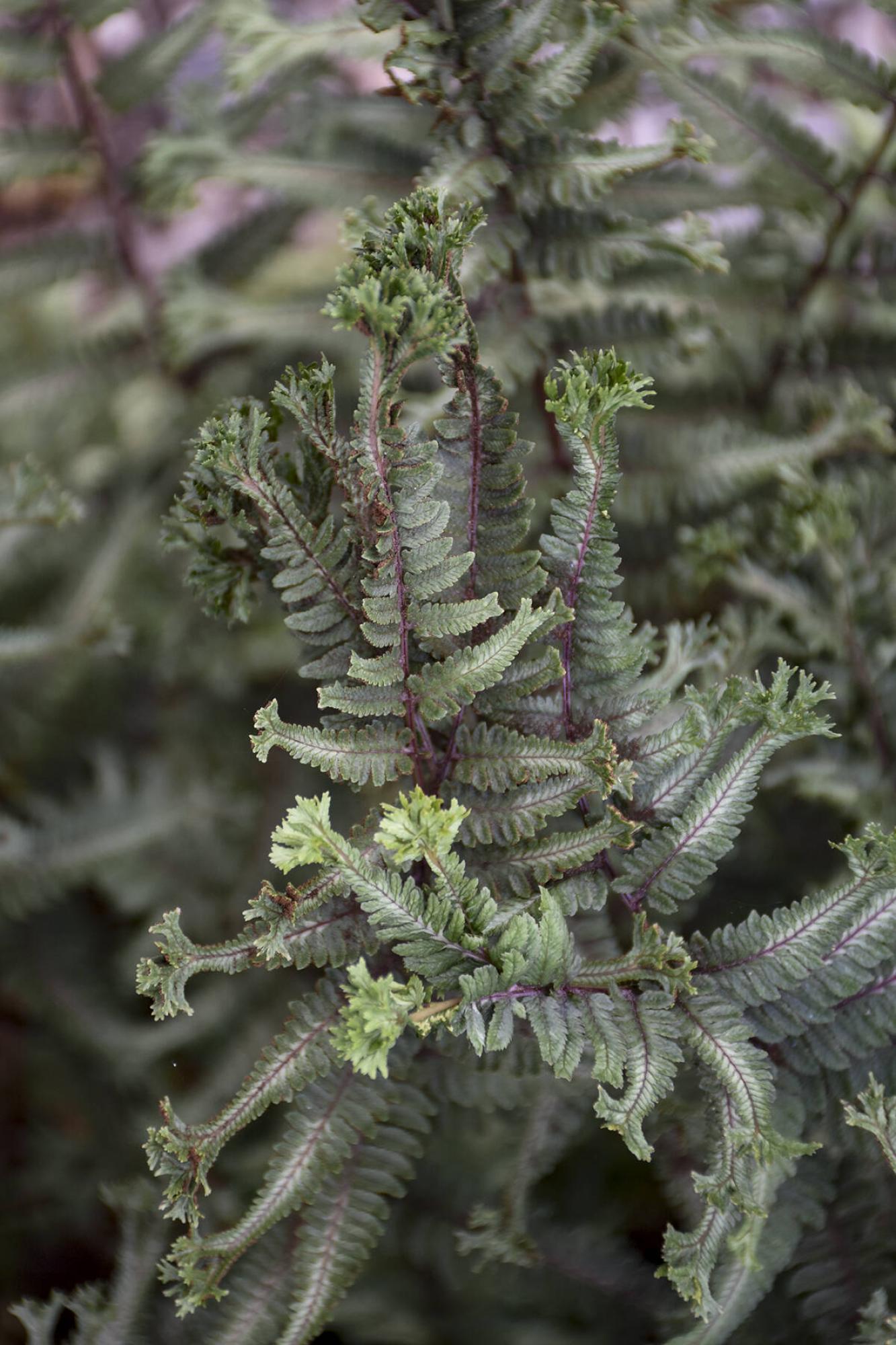
Proven Winners
New for 2024 from Proven Winners, Athyrium Crested Surf is a unique crested Japanese Painted Fern.
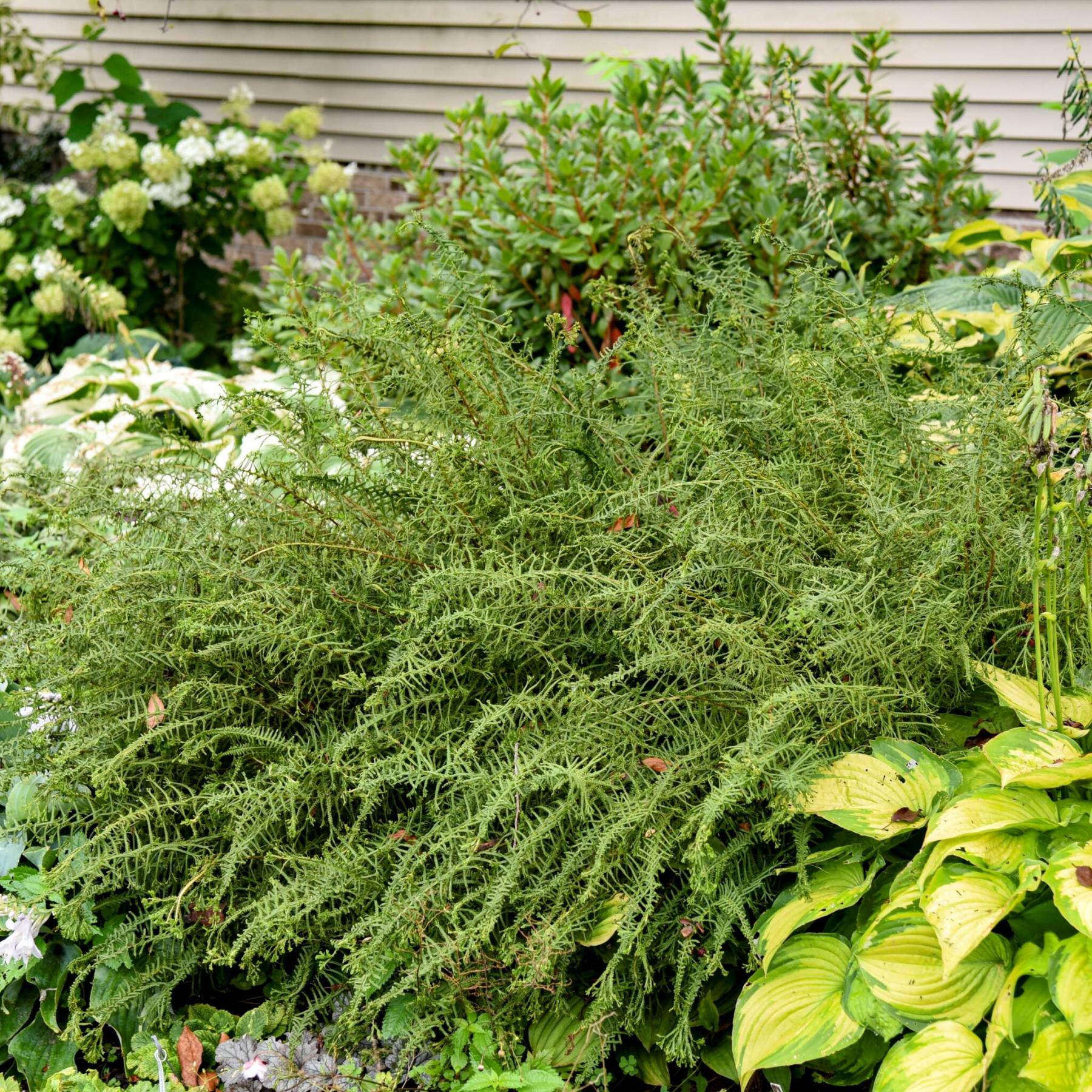
Walters Gardens Inc.
Bring unique form to the shade garden with Victoriae Lady Fern which has cascading fronds and crested leaflets.
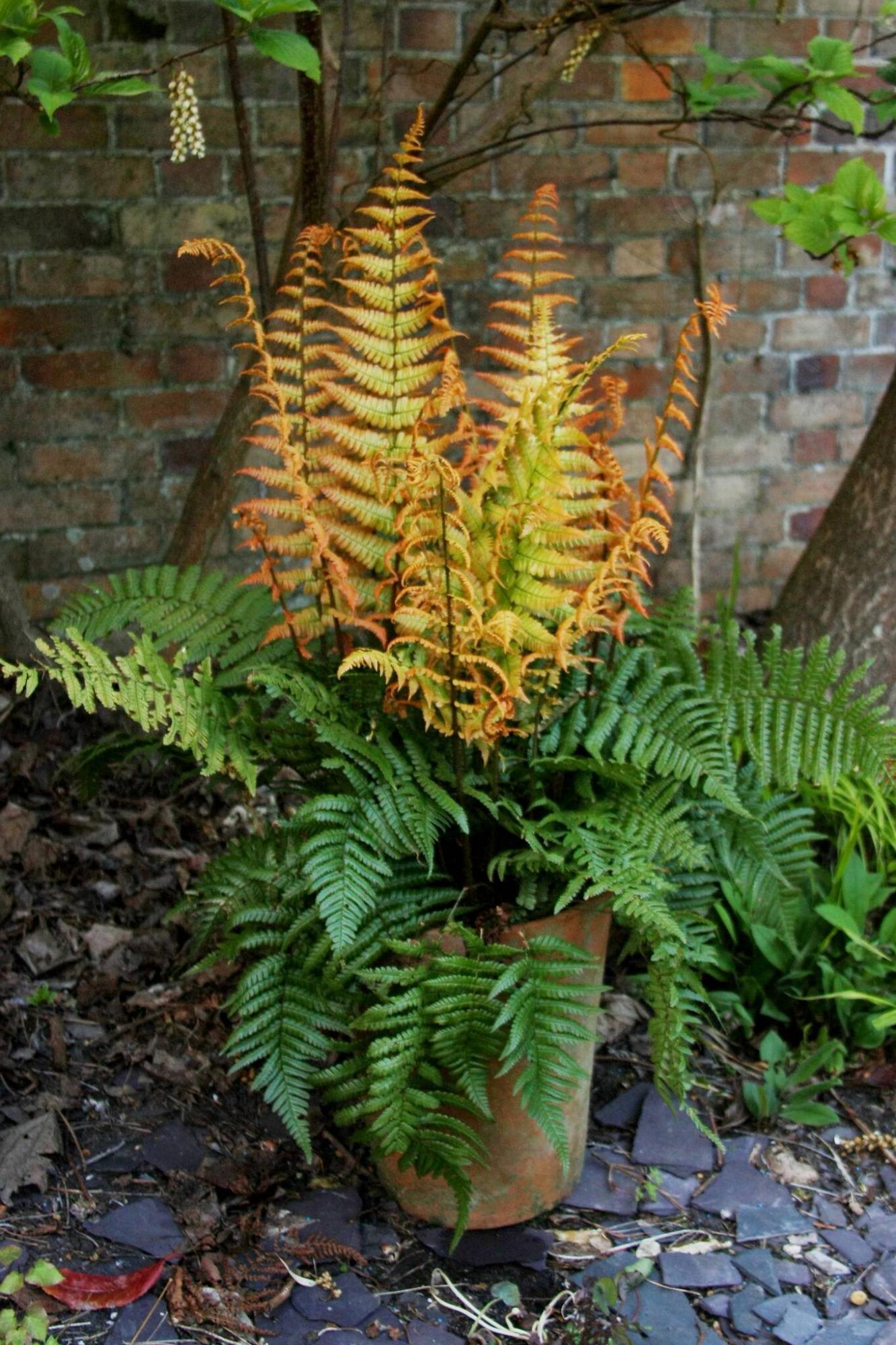
Concept Plants
Shade-loving Jurassic Gold Fern is not hardy in our cold climate but it’s a stunning accent in garden beds or containers.
In shady garden areas, ferns can be highly architectural when their lacy textures are displayed in a lush mix of unique varieties in shades of green and silver-grey. Pair the elegant foliage of ferny plants with a gorgeous selection of other deer-resistant plants and watch how your shade garden stops traffic, literally.
There’s every reason to fall in love with ferns, not only because they are rabbit- and deer-resistant, but also because the many different types of ferns that are available today make them a plant collector’s dream. But first, let’s talk a little more about ferns and critters.
One can never say never when it comes to deer and rabbits and what they choose to munch on, however, ferns are one of the few deer and rabbit resistant shade plants. Craig Gillespie, supervisor of horticulture at Assiniboine Park Conservancy, loves ferns and says that numerous varieties are planted throughout the English and Leo Mol Sculpture Gardens. “In my experience, ferns are one of the few plants that deer do not even stop to sample.” In many gardens that are frequently visited by rabbits, hosta plants are routinely sampled but ferns are left untouched.
If you are planning to design or revamp a shady area this year, here are some of the best ferns for high impact along with a list of deer-resistant companion plants that will add beautiful shape and form, movement, structure, and contrast to your garden or shade containers.
My interest in ferns began on a visit to a friend’s garden where I was impressed by the symmetrical whorl of Northern Maidenhair fern’s bright green, fan shaped, feather-like fronds and distinctive glossy black stems. Native to eastern North America and hardy to Zone 3, Northern Maidenhair fern matures to a height of 12 to 24 inches (30-60cm) and is a graceful addition to a shady border. It also makes an indelible impression in a window box or container garden.
Athyrium Painted and Lady ferns might be all you need to create an instant and captivating woodland garden. There are so many interesting varieties that are hardy to Zone 3. Lady in Red Lady Fern (Athyrium filix-femina) is a quintessential fern for the shade garden. Don’t underestimate Lady in Red based on her nondescript appearance in small containers at garden centres. As Lady in Red matures in the garden, her deep burgundy stem colour and dark green, upright fronds attract attention and are what every florist wants for cut flower arrangements. This is a very full fern with loads of stems. One specimen is hardly enough – you will want more. Lady in Red is native to North America and has a mature height of 24 to 36 inches (60-90cm).
There is also Lady Fern which has triangular-shaped fronds and a more petite size (12 to 24 inches or 30-60cm) suitable for the front of the border.
New for 2024 from Proven Winners, Athyrium Crested Surf (Athyrium niponicum) is a vigorous and intriguing Japanese Painted Fern that has showy, double crested frond tips. The colour is unique as well – shades of green illuminated with silver-grey and contrasting purple stems. Hardy to Zone 3, Crested Surf has a mature height of 20 inches (50.8cm) and a maximum width of 28 inches (71.12cm).
With their soft, feathery fronds, ferns have an ethereal presence in the landscape but none more so than Athyrium Ghost Fern which is a hybrid cross between Japanese Painted Fern (2004 Perennial of the Year) and Lady Fern. The strongly upright fronds are a frosted apple green with a silvery-white sheen with contrasting dark purple stems. It’s worth noting that Ghost Fern which grows to 24 inches is said to have more tolerance of dry soil once it is established. Athyrium Godzilla Giant Painted Japanese Fern resembles Ghost Fern in colour but has a much heftier size — 40 inches or 100 cm.
But then you must also have Athyrium Metallicum Painted Fern which has moodier, silvery-metallic fronds with a wash of grey that deepens in colour alongside the burgundy stems. Ghost, Godzilla, and Metallicum are all considered hardy to Zone 3.
Will we be fortunate enough to see Athyrium Victoriae Lady Fern this spring at garden centres? This is a new and entirely unique Zone 3 selection which features a billowing cascade of dark green fronds. The ends and sides of each pinna or leaflet is crested in a crisscrossing pattern.
Dryopteris ferns, also known as wood ferns or male ferns, offer even more possibilities for shady areas. Barnes Narrow Male Fern (Dryopteris filix-mas Barnesii) has excellent winter hardiness (Zone 2). The pointed blades are medium green and the mature size is similar to that of Lady in Red. And then there is Leatherwood Fern (Dryopteris marginalis), a vase-shaped Zone 3 native fern with arching blue-green fronds that have a leathery texture.
But two exciting, albeit less hardy Dryopteris ferns that are truly worth playing with are Brilliance Autumn Fern (Dryopteris erythrosora) and the award-winning Jurassic Gold (Dryopteris wallichiana). Brilliance Autumn Fern may overwinter well if it is planted in a protected location; however, Jurassic Gold is listed as Zone 5. Both are stunning specimens that have beautiful spring foliage colour. The new fronds of Brilliance Autumn emerge copper-coloured maturing to green and the fresh shoots of Jurassic Gold are golden orange fading to bright golden-yellow and green.
Ferns are not drought tolerant plants. To look their best, they require average to consistent moisture and annual additions of compost. If the soil is allowed to dry out, their beautiful soft fronds may turn crispy and die. But ferns are surprisingly resilient plants and thrive with a reasonable amount of care.
There are several shade-loving perennials that provide a handsome contrast with ferns and are usually resistant to deer and rabbits. My favourite is Sun King Aralia cordata which has bright chartreuse, heart-shaped leaves. This hardy perennial looks beautiful from spring through fall. Other reliably hardy and mostly critter-resistant perennials to consider include Cherry Blush Rodgersia henrici which has large palm-like foliage; Shieldleaf Rodgersia Astilboides tabularis which has circular, umbrella-like leaves; Ajuga reptans Black Scallop with highly polished black leaves; Pulmonaria lungwort with silvery spotted leaves; and Ligularia Othello with glossy purple-black foliage and imposing size. Brunnera Alexander’s Great and Brunnera Sea Heart are dynamic, deer-resistant shade perennials with silvery leaves and masses of sky-blue forget-me-not-like flowers in spring.
Read your plant tags for the mature height and spread of each new plant you install and give your plants room to grow. Begonias that have waxy or fuzzy leaves or hairy stems are a marvelous filler and are typically deer-resistant but of course, it depends on the preferences of the deer in your neighbourhood. Bountiful, floriferous varieties such as Dragon Wing Red Bronze Leaf Begonia or Interspecific Begonia Dragon Wing White are recent introductions that provide an excellent flower show. Or look to the Jurassic Rex Begonia series for coarse texture, vibrant hues, and dramatic patterned foliage.
You’re going to love your shade garden.
colleenizacharias@gmail.com

